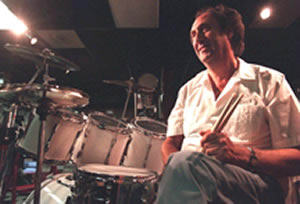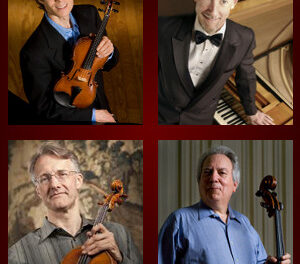Baldwin Auditorium‘s balcony was well-filled with music lovers, friends, and relatives for an enticing program of the Duke University Symphony Orchestra under Music Director Harry Davidson‘s baton. His musical menu sandwiched two nineteenth century Italian staples around a choice concerto by the very American Aaron Copland (1900-90). The featured soloist was Jimmy Gilmore, a current faculty member and long-time principal clarinetist of the North Carolina Symphony (retired).
The Overture to La Gazza Ladra (The Thieving Magpie) was the twenty-first opera of the twenty-five-year old Gioacchino Rossini (1792-1868). Its colorful and fast-paced orchestral effects hide the dark underbelly of the opera’s libretto which was rooted in a true story, well-known at the time, about a young woman put to death for a magpie’s theft. In Rossini’s opera the true “thief” is revealed in time for a happy ending.
Davidson led a solid, well-controlled interpretation with some really fine playing from his very large, almost all-student orchestra. The French horns were particularly strong and the violins were very cohesive, playing with tight ensemble in the fastest passages. The principal oboe delivered the famous melody beautifully. Fine efforts were had from woodwinds, percussion, trumpets, and trombones.
Following in the footsteps of Paul Whiteman, bandleaders Woody Herman (1913-87) and Benny Goodman (1909-86) crossed over between the worlds of jazz and classical music by commissioning works from contemporary composers. Herman wanted pieces for his Thundering Herd band whereas Goodman sought solo concertos and chamber music. Both approached Copland with a commission offer at about the same time. Copland accepted Goodman’s offer and was paid $2000, the same as he paid Paul Hindemith for a concerto. Copland admired Goodman and said “writing for him would give me a fresh point of view.”
The Clarinet Concerto is scored for solo clarinet, strings, harp, and piano. A 1948 revision dealt with some of Goodman’s concerns about some high notes and other technical difficulties. The premiere took place in a radio broadcast November 6, 1950 with Goodman and the NBC Symphony Orchestra under Fritz Reiner. It is in a two-movement slow-fast format linked by an extended cadenza for the soloist that anticipates elements of the last movement. It ties up the dreamy, warm, and lyrical nostalgia of the slow movement with the spiky and fragmented second movement. The later combined jazz elements with elements of northern Brazilian folk music Copland heard during a State Department sponsored tour of South America.
Gilmore played the socks off the solo part with truly breathtaking breath control and articulation of the fastest passages. His control of dynamics and tone brought out all the beauty of the yearning melodies of the slow movement. His rhythmic control brought out the last movement’s frenetic syncopation leading to the ending’s brilliant concluding glissando. Davidson led his student musicians in an effective accompaniment with fine contributions from the string sections and harpist Lily el Naccash and Ilhan Gokhan who really dug into the upright piano’s keys. A typical highlight was Gilmore’s flawless spinning of a jaunty melody juxtaposed to jazzy vamps from the low strings.
The same high musical standards were maintained throughout the concluding, ever popular, sunny Symphony No. 4 in A, Op. 90, “Italian” (1833) by Felix Mendelssohn (1809-47).
On May 13, 1833, Mendelssohn led the premiere with the Philharmonic Society Orchestra in the famous Hanover Rooms, London. The work, especially the scintillating opening “Allegro vivace,” radiates the essence of the sunlit Mediterranean world he had toured. Of the haunting “Andante con moto,” Larry Todd in Mendelssohn, considers “the alternating modal/tonal passages suggest a rehearing of monophonic chant through a modern ‘tonal’ perspective.” The composer’s 1834 revision suggested the third movement ought to be taken as an elegant “Menuetto” to more strongly contrast with the “raucous finale, which begins with a saltarello modelled on folk dances he had heard in Rome.”
Davidson led a stylish, fast-paced interpretation with his players almost always in lock step with his direction. The articulation of the two violin sections was again outstanding. Horns were superb with strong contributions from the trumpets and woodwinds such as clarinet, flute, and oboe. Low strings came into their own with rich, warm contributions in the last two movements.












